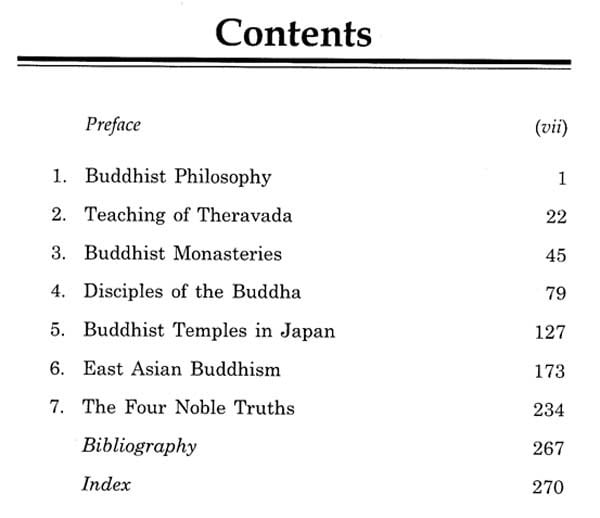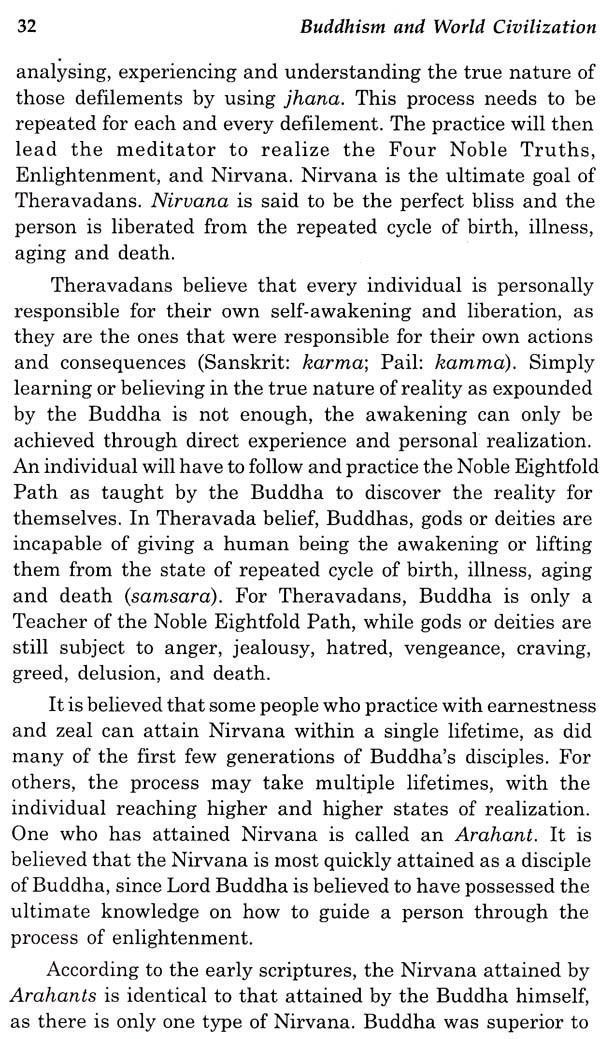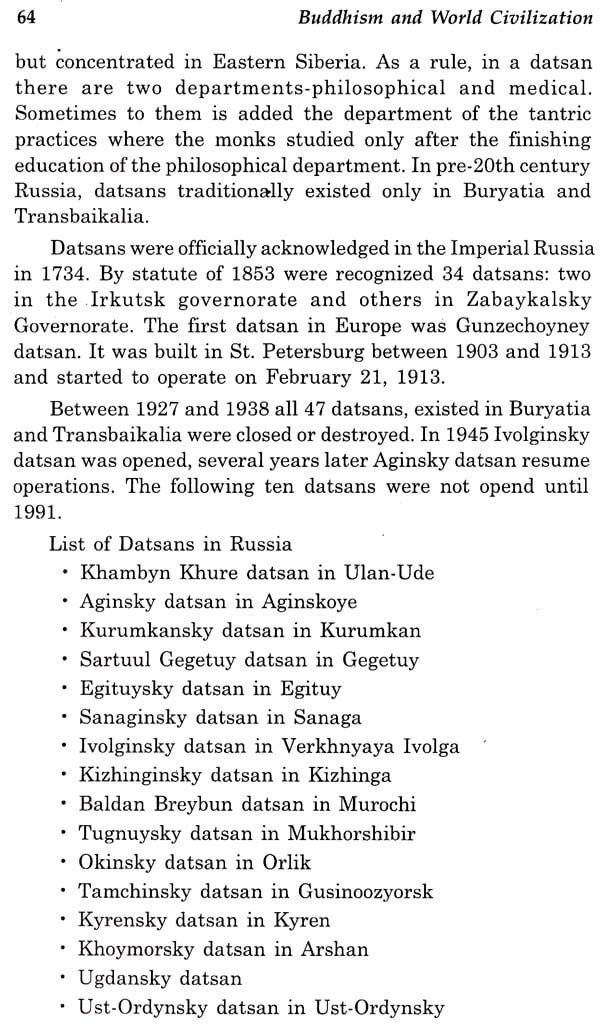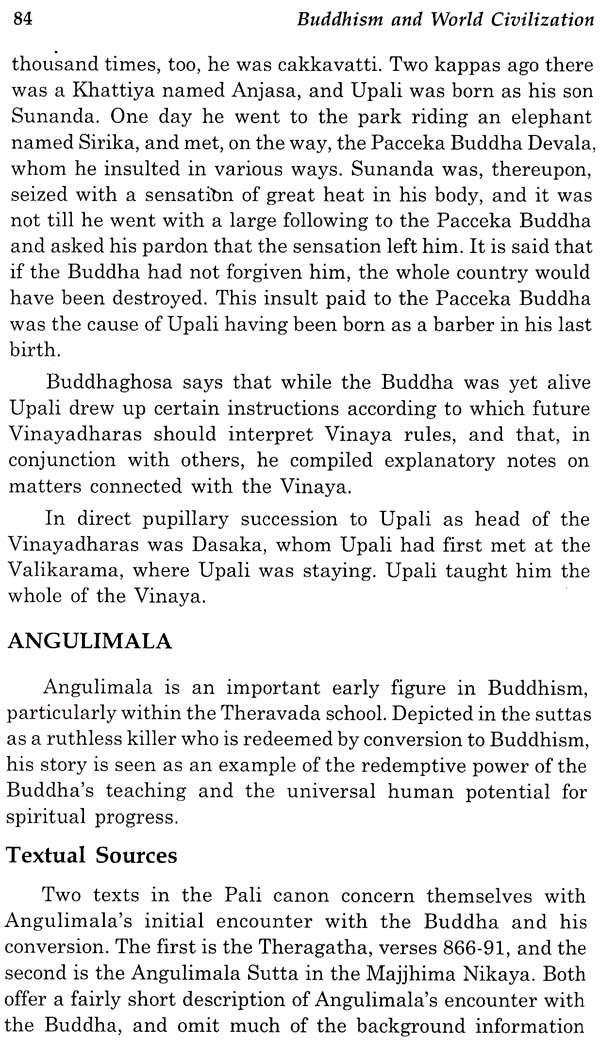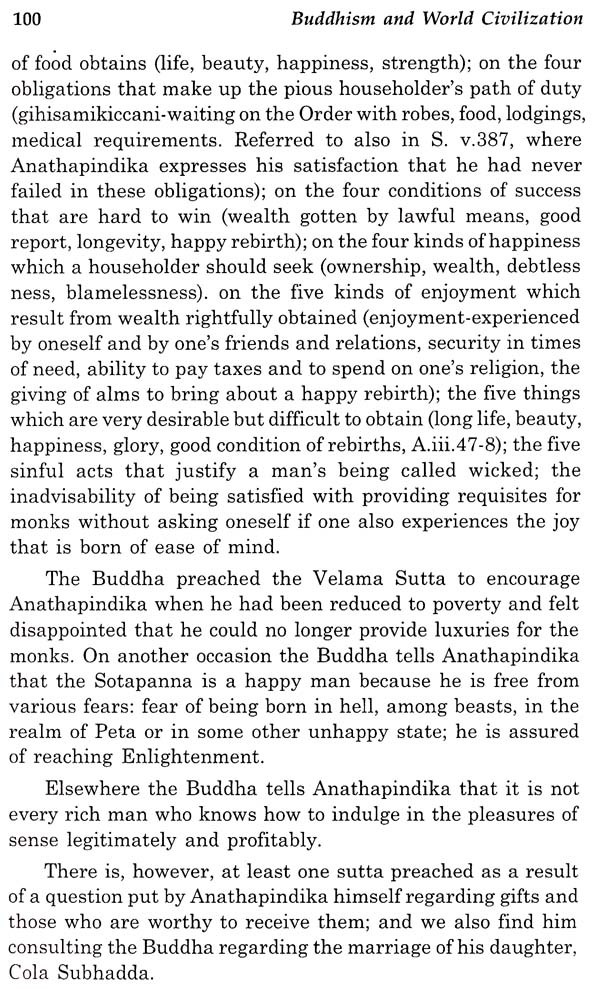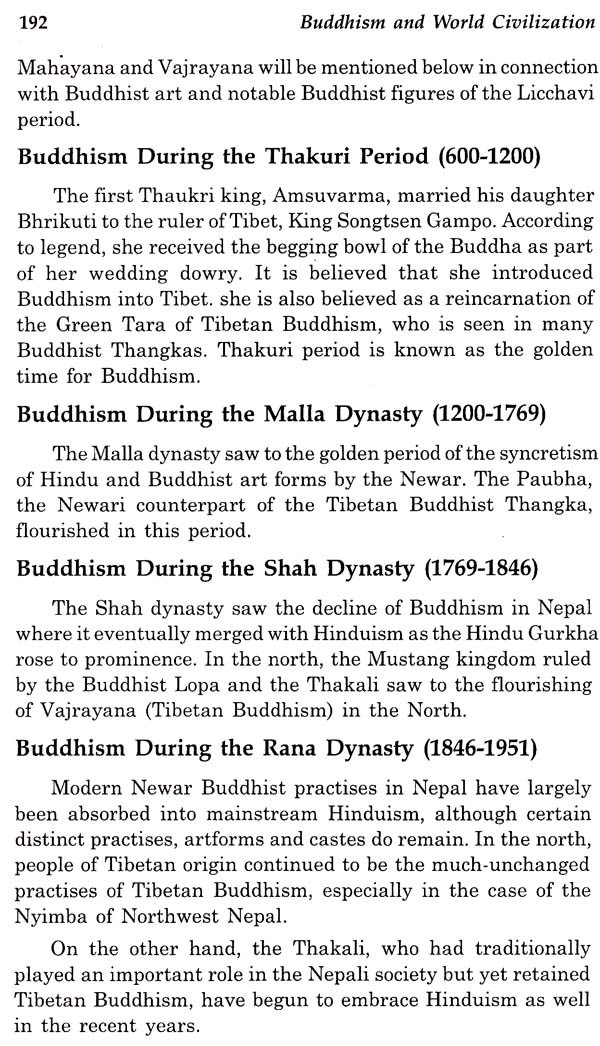
Buddhism and World Civilization
Book Specification
| Item Code: | UAR297 |
| Author: | Indra Narayan Singh |
| Publisher: | Prashant Publishing House, Delhi |
| Language: | English |
| Edition: | 2018 |
| ISBN: | 9788193719305 |
| Pages: | 278 |
| Cover: | HARDCOVER |
| Other Details | 9.00 X 6.00 inch |
| Weight | 510 gm |
Book Description
Buddhism arose between 500-300 BCE, when Siddhartha Gautama, a young man from an aristocratic family, left behind his worldly comforts to seek spiritual enlightenment. He became a teacher commonly known as the Buddha meaning "the awakened one," and Buddhism spread to become a non-theistic religion that encompasses a variety of traditions, beliefs, and practices largely based on his teachings. Buddha is thought to have died around 483 BCE, after 45 years of travel and teaching. Buddhists believe he passed into a state of Nirvana. Small communities of monks and nuns, known as bhikkus, sprung up along the routes Buddha traveled. Buddhism was overshadowed by the more dominant Hindu religion, but this began to change in the 3rd century BCE; this was when one of the Indian subcontinent's great rulers, Ashoka I of the Maurya Empire, renounced wars, despite having waged war to build his own kingdom. In a major break from others rulers of the time, he converted to Buddhism. Today, Buddhism is practiced by an estimated 488 million people. China is the nation with the largest number of Buddhists, approximately 244 million followers, or more than 18% of its total population. Other countries that have a large number of Buddhists among their populations include Myanmar with 48.4 million, Japan with 45.8 million, Sri Lanka with 14.2 million, Cambodia with 13.7 million, South Korea with 11 million, Thailand, Laos, Singapore, Taiwan, and Nepal. The United States is home to an estimated 1.2 million Buddhists, or 1.2% of the American population. This book contains the fundamental and basic information of subject and the selection of contents makes it an appropriate book for the students.
Dr. Indra Narayan Singh, a Senior Lecturer in the Department of Buddhist Studies Delhi University Since 1996, obtained his Doctorate on A Study of Universal Flux in Theravada Buddhism.
Dr. Singh has published a number of articles and is a regular contributor to various journals and magazines of national and international repute. He has also edited the journals of Buddhist Studies.
Buddhism arose between 500-300 BCE, when Siddhartha Gautama, a young man from an aristocratic family, left behind his worldly comforts to seek spiritual enlightenment. He became a teacher commonly known as the Buddha, meaning "the awakened one," and Buddhism spread to become a non-theistic religion that encompasses a variety of traditions, beliefs, and practices largely based on his teachings.
Buddhism is based on an ancient Indian religious philosophy called Sramana, which began as an offshoot of the Vedic religion. Several Sramana movements are known to have existed in India before the 6th century BCE. Sramana existed in parallel to, but separate from, Vedic Hinduism, which followed the teachings and rituals found in the Vedas, the most ancient texts of the Vedic religion. Sramana, meaning "seeker," was a tradition that began when new philosophical groups who believed in a more austere path to spiritual freedom rejected the authority of the Vedas and the Brahmins, the priests of Vedic Hinduism, around 800-600 BCE.
Buddhist teachings explain that Siddhartha was a young man from a respected family, who renounced his family and left his father's palace at age 29 in search of truth and enlightenment through Sramana. Siddhartha began this quest through a period of starvation and, according to legend, grew so thin he could feel his hands if he placed one on his back and the other on his stomach. This explains statues that depict Buddha as thin and withered, rather than the better known depiction of him seated with a large belly.
Buddhism entered China during the Han dynasty (206 BCE 220 CE): The first Buddhist missionaries accompanied merchant caravans that travelled using the Silk Road, probably during the 1st century BCE. The majority of these missionaries belonged to the Mahayana school.
This book contains the fundamental and basic information of subject and the selection of contents makes it an appropriate book for the students.
**Contents and Sample Pages**

